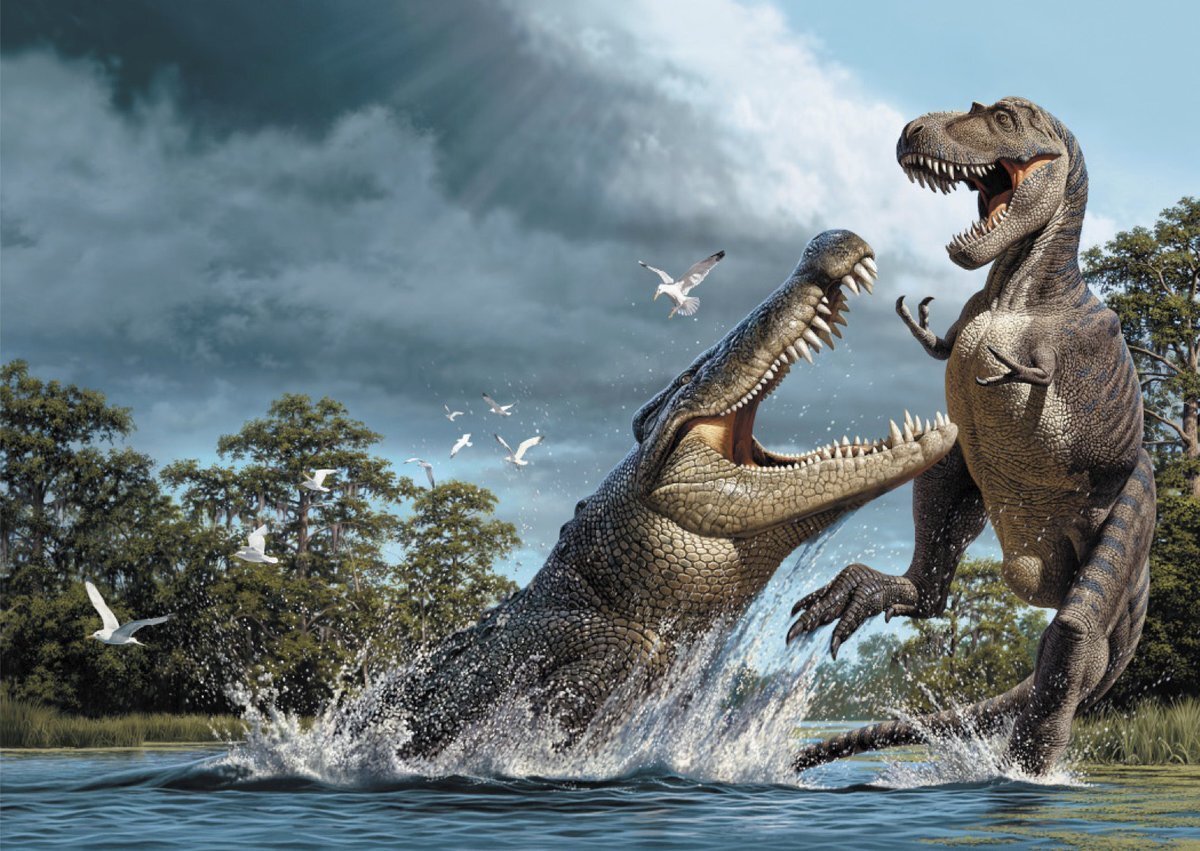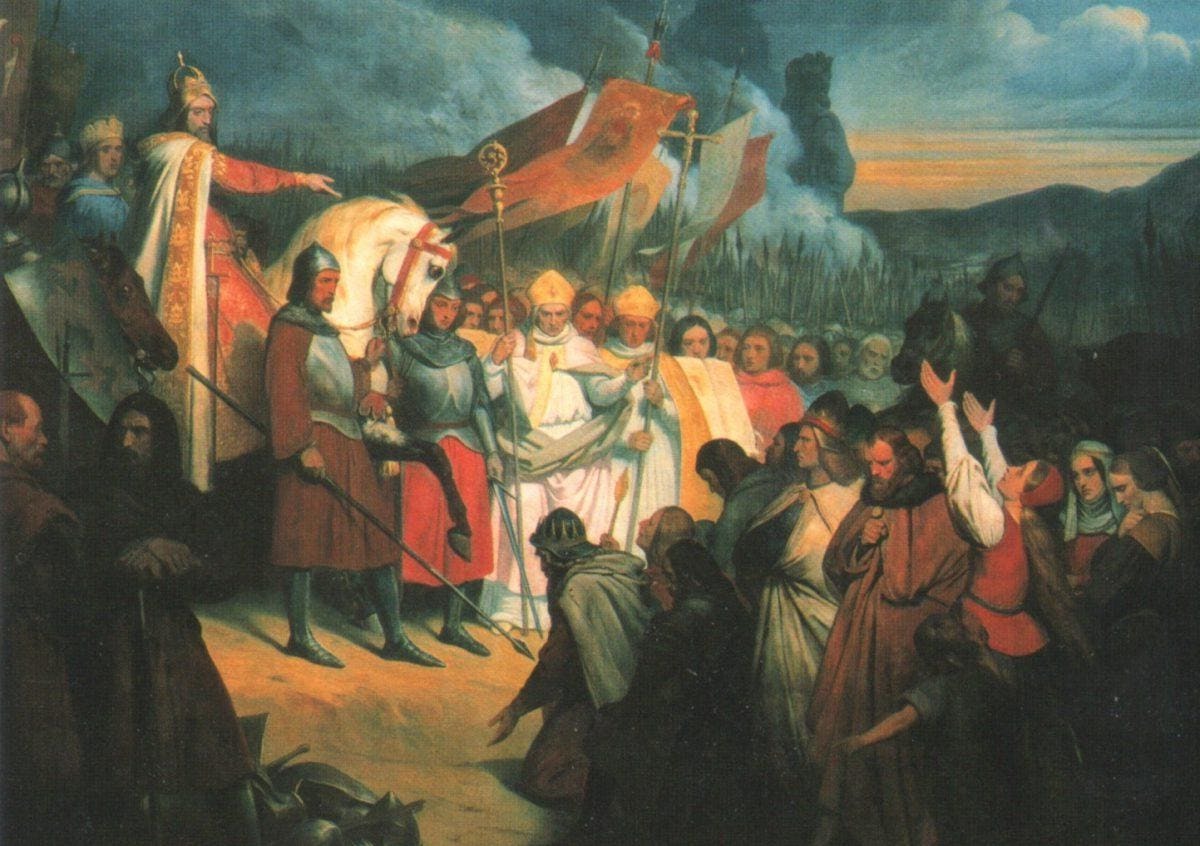
What was Purussaurus? Imagine a crocodile the size of a bus lurking in ancient South American waters. Purussaurus was a colossal prehistoric crocodylian that lived around 8 million years ago during the Miocene epoch. This giant predator could grow up to 41 feet long and weigh as much as 18,000 pounds. Its massive jaws and powerful bite made it one of the top predators of its time, capable of taking down large prey, including giant turtles and even other large reptiles. Fossils of Purussaurus have been found primarily in Brazil, Peru, and Venezuela, painting a vivid picture of a fearsome creature that once dominated its ecosystem.
Key Takeaways:
- Purussaurus, a massive prehistoric crocodile, ruled South America during the Miocene epoch, growing up to 41 feet long and weighing as much as an elephant, with a bite force of over 15,000 pounds per square inch.
- Fossil discoveries of Purussaurus have provided insights into its size, diet, and environment, shedding light on its role in shaping prehistoric ecosystems and captivating paleontologists and enthusiasts alike.
What is Purussaurus?
Purussaurus was a giant prehistoric crocodilian that roamed South America during the Miocene epoch. This massive predator was one of the largest crocodyliforms ever to exist. Let's dive into some fascinating facts about this ancient beast.
Size and Physical Characteristics
Understanding the sheer size and physical traits of Purussaurus helps paint a picture of its dominance in its ecosystem.
- Purussaurus could grow up to 41 feet long, making it one of the largest crocodilians ever.
- It weighed around 18,000 pounds, comparable to a large elephant.
- Its skull alone measured about 5 feet in length.
- The teeth were conical and robust, ideal for gripping and crushing prey.
- Purussaurus had a powerful bite force, estimated to be over 15,000 pounds per square inch.
Habitat and Distribution
Purussaurus thrived in specific environments that supported its massive size and predatory lifestyle.
- It lived in freshwater environments like rivers, lakes, and swamps.
- Fossils have been found primarily in the Amazon Basin, particularly in Brazil, Peru, and Colombia.
- The climate during its time was warm and humid, perfect for a semi-aquatic predator.
- Dense vegetation and abundant water sources provided ample cover and hunting grounds.
- The region was teeming with diverse wildlife, offering plenty of prey.
Diet and Hunting Behavior
As an apex predator, Purussaurus had a varied diet and unique hunting strategies.
- It primarily fed on large vertebrates, including fish, turtles, and mammals.
- Evidence suggests it could take down large prey like giant sloths and other megafauna.
- Purussaurus likely used ambush tactics, lying in wait for unsuspecting prey near water edges.
- Its powerful jaws could crush bones, making it easier to consume large animals.
- The conical teeth helped it grip slippery prey, preventing escape.
Evolution and Relatives
Purussaurus belonged to a fascinating lineage of crocodilians with a rich evolutionary history.
- It was part of the Alligatoridae family, closely related to modern alligators and caimans.
- Purussaurus evolved during the Miocene epoch, around 8 million years ago.
- Its closest living relatives are the caimans found in South America today.
- The genus Purussaurus includes several species, with Purussaurus brasiliensis being the most well-known.
- Fossil evidence shows that Purussaurus had a relatively short evolutionary timeline compared to other crocodilians.
Fossil Discoveries
The discovery of Purussaurus fossils has provided significant insights into its biology and ecology.
- The first Purussaurus fossils were discovered in the 19th century in Brazil.
- Well-preserved skulls and jawbones have been crucial in understanding its size and feeding habits.
- Fossilized remains of prey items have been found near Purussaurus fossils, indicating its diet.
- Some fossils show evidence of injuries, suggesting intraspecific combat or predation attempts.
- Ongoing excavations continue to uncover new fossils, shedding light on its life and environment.
Extinction and Legacy
The extinction of Purussaurus marked the end of an era for giant crocodilians in South America.
- Purussaurus went extinct around 5 million years ago, likely due to climate changes and habitat loss.
- The drying up of large water bodies reduced its hunting grounds and prey availability.
- Competition with other predators, including early jaguars and large snakes, may have contributed to its decline.
- Its extinction paved the way for the rise of smaller crocodilians and other predators in the region.
- Despite its extinction, Purussaurus remains a symbol of prehistoric South American megafauna.
Interesting Tidbits
Here are some additional intriguing facts about Purussaurus that highlight its unique place in prehistoric history.
- Purussaurus had a relatively slow growth rate, taking many years to reach its massive size.
- It likely had a long lifespan, possibly exceeding 50 years.
- Some scientists believe it had a social structure similar to modern crocodilians, with dominant individuals controlling prime territories.
- Purussaurus may have played a crucial role in shaping the ecosystems of its time by controlling prey populations.
- Its fossils continue to captivate paleontologists and enthusiasts, offering a glimpse into the ancient world of giant reptiles.
Final Roar of Purussaurus
Purussaurus, a giant prehistoric crocodile, ruled South America's waterways millions of years ago. This massive predator, with its powerful jaws and immense size, was a force to be reckoned with. Fossils reveal that it could grow up to 41 feet long, making it one of the largest crocodilians ever.
Its diet likely included large mammals, fish, and even other reptiles. The Amazon rainforest, where it once thrived, was a vastly different environment back then, teeming with diverse wildlife. Understanding Purussaurus helps scientists piece together the puzzle of ancient ecosystems and the creatures that inhabited them.
This fascinating creature's legacy lives on through the fossils and research that continue to captivate paleontologists and enthusiasts alike. So next time you think of prehistoric giants, remember the mighty Purussaurus and its reign over ancient rivers.
Frequently Asked Questions
Was this page helpful?
Our commitment to delivering trustworthy and engaging content is at the heart of what we do. Each fact on our site is contributed by real users like you, bringing a wealth of diverse insights and information. To ensure the highest standards of accuracy and reliability, our dedicated editors meticulously review each submission. This process guarantees that the facts we share are not only fascinating but also credible. Trust in our commitment to quality and authenticity as you explore and learn with us.


